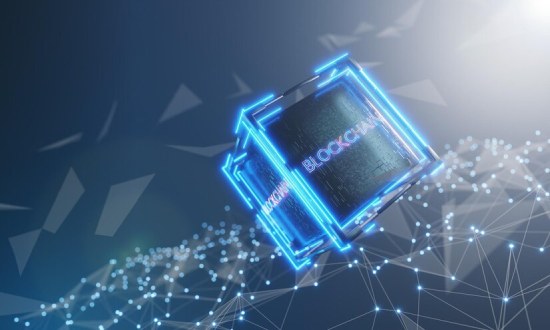-
Introduction
In today's evolving digital landscape, peer-to-peer (P2P) crypto exchanges have transitioned from niche platforms to a mainstream necessity. As centralized exchanges grapple with vulnerabilities like hacks, account freezes, and mounting regulatory pressures, a growing number of traders are seeking more direct control over their assets. P2P platforms address this need by enabling users to transact directly with one another, while the platform itself provides crucial services like escrow and dispute resolution. This demand has fueled a significant boom in p2p crypto exchange development, making it a key focus for builders in the crypto space.
Binance's P2P platform has processed billions in trades since launch. Paxful built dominance in Africa and LATAM by supporting local payment methods. Meanwhile, LocalBitcoins, once the pioneer, shut down in 2023 after losing liquidity and falling behind on compliance.
For startups, the message is clear: the business model works, but success depends on solving trust, liquidity, and compliance early. Done right, P2P exchanges are a sustainable, revenue-generating business in 2025.
👉 Explore our p2p crypto exchange development services to see how white-label vs. custom builds stack up.
Core Features of a P2P Exchange
- Escrow wallets : Escrow holds seller funds until buyers confirm payment. Binance P2P and Paxful both rely on this model to reduce fraud. Without escrow, your platform is just a listings site.
👉 Not sure which features to prioritize for your MVP? We've built a feature-priority matrix for P2P exchanges,reach out and we'll share it.
- Multi-asset support : Stablecoins now dominate global P2P trading, with USDT and USDC accounting for the majority of trades. Bitcoin and Ethereum remain important but can't drive liquidity alone.
- KYC/AML verification : In the U.S., FinCEN requires all MSBs (Money Services Businesses) to implement customer verification. Tiered KYC (light checks for small trades, full ID for large) helps balance compliance and growth.
- Dispute resolution tools : Admin dashboards must show chat logs, trade history, and uploaded receipts. Paxful scaled because it resolved disputes quickly and fairly.
- Payment rails : Traders expect localized options: Zelle, CashApp, and ACH in the U.S.; M-Pesa in Africa; SEPA in Europe. Pair this with a reputation system so users can identify trusted sellers.
Revenue Models for P2P Exchanges
Most successful P2P exchanges rely on multiple revenue streams:
- Trading fees : Sellers typically pay 0.5–1% per completed trade.
- Premium listings : Paxful monetized early by letting sellers pay to feature offers.
- Escrow commissions : Some platforms charge extra for advanced dispute coverage.
- Ads and partnerships : With enough traffic, exchanges monetize via crypto services.
- Pro accounts : Subscriptions with faster dispute handling, higher limits, or premium support.
Cost of Developing a P2P Exchange
A serious MVP typically costs $80K–$150K. That covers escrow logic, wallet integration, KYC, a web app, and admin dashboards. Adding mobile apps, multi-crypto support, and automated workflows can push costs past $200K. Timelines usually range from six to twelve months.
White-label platforms cost $40K–$70K and can launch in weeks. They're fine for proof-of-concept, but compliance and scalability often require a rebuild. Investors generally prefer custom builds because they signal long-term viability.
Hidden costs include licensing fees, security audits, liquidity seeding, and customer support. New York's BitLicense, for example, can cost hundreds of thousands in legal and compliance expenses. Smart founders launch lean..focusing on one region and two assets, then scale once revenue stabilizes.
👉 Want a real budget breakdown before pitching investors? Book a session, we'll walk you through typical hidden costs like licensing, liquidity seeding, and audits.
Technical Architecture and Stack
A P2P exchange combines multiple layers:
- Frontend: React or Vue for user-facing apps.
- Backend: Node.js or Python with PostgreSQL for trade records and Redis for caching.
- Wallet infrastructure: Bitcoin, Ethereum, and stablecoin support. Teams either run their own nodes or use providers like Infura.
- Escrow system: Custodial (internal wallets) or non-custodial (smart contracts). Multi-sig and hardware security modules (HSMs) reduce risk.
- Real-time communication: WebSockets or Socket.io for instant trade updates.
- Scalability: AWS or GCP with auto-scaling, plus RabbitMQ or Kafka for processing KYC, escrow releases, and blockchain confirmations in the background.
👉 Related: Decentralized exchange development services for comparisons with AMM/DEX infrastructure.
Liquidity Bootstrapping Strategies
Liquidity is the #1 challenge for new P2P platforms. Without active offers, buyers log in once and never return.
- Binance P2P solved this by connecting its CEX users directly to its P2P marketplace, seeding instant liquidity .
- Paxful took a regional strategy, focusing on Africa and LATAM. By supporting M-Pesa and Mercado Pago, it attracted local sellers who built trust in those markets 【Paxful, 2024】.
For startups without an existing user base, liquidity must be seeded:
- Self-seeding trades: Operate verified accounts on both sides to simulate activity.
- Maker-first incentives: Zero or negative fees for early sellers to encourage offers.
- Referral programs: Reward users who bring verified traders completing first deals.
- Regional launch strategy: Focus on one or two countries with strong crypto demand and accessible payment rails before going global.
👉 Liquidity is the #1 reason P2P exchanges fail. Talk to us about our proven playbook for seeding trades and onboarding early sellers.
Security Architecture and Risk Management
Security failures destroy P2P platforms faster than anything else. In 2020, KuCoin lost over $280 million after hackers compromised private keys. While most funds were recovered, the breach highlighted how fragile centralized custody can be.
Escrow Models
- Custodial escrow: Platform holds funds. Easier to implement, but single point of failure.
- Non-custodial escrow: Smart contracts or multi-sig wallets lock funds until release. More secure, but adds UX friction and dispute complexity.
- Hybrid: Custodial for small trades, non-custodial for larger volumes.
Common Attack Vectors
- Key management failures (lost or stolen keys, SIM swaps).
- Payment fraud (fake receipts, chargebacks).
- API abuse (spam or malicious bots draining liquidity).
- Insider risks (rogue admins releasing escrow prematurely).
Best Practices Beyond Wallets
- Mandatory 2FA for every trade and dispute action.
- Blockchain analytics tools (Chainalysis KYT, TRM Labs) to flag risky counterparties.
- Automated risk scoring to flag unusual trades.
- Separation of duties so no admin can both approve KYC and release escrow.
Founder Decisions
- Custody: In-house or outsourced to providers like Fireblocks/BitGo?
- Insurance: Will escrow wallets be insured? Insurance builds trust but adds costs.
- Audit cadence: Quarterly penetration tests vs. annual audits.
- User education: Building anti-phishing guides for traders.
Security is more than tech—it's a trust feature. Exchanges that publish audit reports, run bug bounties, and educate users gain loyalty faster.
Also Read : Ordinals wallet development guide
Compliance and Regulation
In the U.S., P2P exchanges are regulated as Money Services Businesses (MSBs) under FinCEN. Requirements include AML programs, suspicious activity reporting, and compliance officers.
Federal + State Complexity
- FinCEN registration: Mandatory for all MSBs.
- State licenses: Most states require money transmitter licenses. New York's BitLicense is the strictest, costing startups significant legal and compliance spend.
- Strategy: Many startups block New York users at launch and expand later.
Global Frameworks
- EU MiCA: Unified crypto regulation framework across member states.
- Dubai VARA license: High upfront capital requirements but fast-growing MENA access.
- Singapore MAS license: Strict AML controls but global credibility.
Compliance as a Trust Signal
Paxful emphasized compliance in its later years to maintain access to key markets. Users are more likely to trade when they see strong KYC, AML, and risk monitoring..
Development Process: Step by Step
- Define scope : Decide MVP vs. full build, pick region and assets, align with legal advisors.
- Design UX : Wireframe escrow, disputes, and payouts. Test with real users.
- Build core modules : Escrow, wallets, KYC first. Add messaging, admin dashboards, and notifications later.
- Test extensively : Simulate fraud, disputes, and hacks. Run third-party audits.
- Launch lean : Start with one region and two assets. Incentivize liquidity and expand gradually
Case Studies of P2P Exchanges
- Binance P2P integrated liquidity from its CEX, achieving scale rapidly.
- Paxful dominated Africa and LATAM with local payment rails like M-Pesa.
- LocalBitcoins shut down in 2023 after liquidity and compliance failures.
👉 Lesson: Compliance and liquidity are the real moats.
Challenges for Startups
- Liquidity :Without active offers, buyers leave. Self-seeding and incentives are crucial.
- Fraud : Payment scams and fake receipts are daily risks. Escrow + moderation mitigate.
- Regulation shifts : The U.S. Treasury updated KYC/AML rules twice in three years 【U.S. Treasury, 2024】.
- Customer support load : P2P users need more hand-holding than CEX traders. 24/7 support is a must.
Future Trends in P2P Exchanges
- DeFi integration: Smart contract escrows for transparency.
- Stablecoins & CBDCs: Already dominating, with CBDCs on the horizon.
- AI compliance: Fraud detection and dispute resolution using machine learning tools from leading analytics providers.
- Localization: Payment rails drive adoption (CashApp, SEPA, M-Pesa).
- DAO governance: Community-driven dispute resolution may replace centralized moderation.
Conclusion
P2P exchanges are proven. The demand is real, the business models work, but execution is tough. Founders that prioritize liquidity, compliance, and security from day one will win.
The roadmap is clear: launch lean, seed liquidity aggressively, treat security as a feature, and expand region by region. Do it right, and your platform could be the next Binance P2P or Paxful.
👉 Ready to build? Explore our P2P crypto exchange development services and book a consultation with our blockchain experts.
FAQs
Q: How do P2P exchanges make money?
A: Trading fees (0.5–1%), premium listings, escrow commissions, ads, and subscriptions.Q: How long does development take?
A: Six to twelve months for custom builds; weeks for white-label pilotsQ: What's the biggest challenge?
A: Liquidity. LocalBitcoins lost users when Binance captured liquidity.Q: Is P2P legal in the U.S.?
A: Yes, but requires FinCEN registration and state licenses.Q: Which assets should we start with?
A: Bitcoin, Ethereum, and at least one stablecoin. Stablecoins dominate P2P activity. - Escrow wallets : Escrow holds seller funds until buyers confirm payment. Binance P2P and Paxful both rely on this model to reduce fraud. Without escrow, your platform is just a listings site.

Our Offices
INDIA
Emaar Digital Greens, Sector 61,
Gurugram, Haryana
122011.
Welldone Tech Park,
Sector 48, Sohna road,
Gurugram, Haryana
122018.














